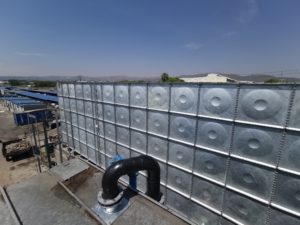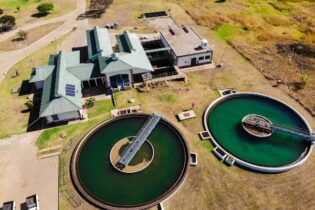Due to continuous water disruptions, some of Africa’s largest hospitals are installing water tanks.
Water storage solution provider, ABECO Tanks, has installed a 114 kℓ tank for the Covid-19 ward in Baragwanath Hospital in Soweto. They also installed two tanks, with a combined capacity of 290 kℓ for essential cleaning, fire suppression, and water chilling services at the Dr. George Makuru Academic Hospital in Pretoria. Three tanks (including a sprinkler tank in case of fire) were installed at the Helen Joseph Hospital in Johannesburg after water interruptions were experienced due to the power supply failure at the Eikenhof Pumping Station. While the Gauteng government quickly focused on bringing in water tankers, longer-term solutions that accept the ongoing infrastructure crises at all facilities are needed. However, core infrastructure must be adequately addressed in the preparedness planning of our future hospitals. “Hospital management must conduct a risk analysis of potential water disruptions to find out the impact of a water outage within the hospital both on existing and future structures, to ensure the survival of their ability to provide their life-saving services,” urges the CEO of Abeco Tanks Mannie Ramos Jnr.One of the primary risks to any hospital is that many of the medical air compressors that control air to their most vulnerable patients in ICU are water-cooled. This makes independent backup water sources as essential as generators.
The average water consumption for the various types of healthcare facilities also varies greatly – from 50 ℓ per day per patient for Emergency Medical Services to 450 ℓ per patient per day in central hospitals (GreenCape report). It is extremely important when performing the risk assessment that management consider the realistic requirements of each sector within the facilities. Water supply interruptions occur for a variety of reasons, from the predictable such as routine maintenance, infrastructure breaks, and power outages to the completely unforeseen like water main breaks, contamination, natural disasters, and increased demand due to pandemics. Although there are many challenges to installing water tanks on a scale large enough to make institutions disaster-resistant – including volume, cost, integration with existing plumbing, systemic security, and land space – it is still essential for hospitals to seek water independence through alternatives like tanks, groundwater, rainwater capture, and wastewater recycling.






